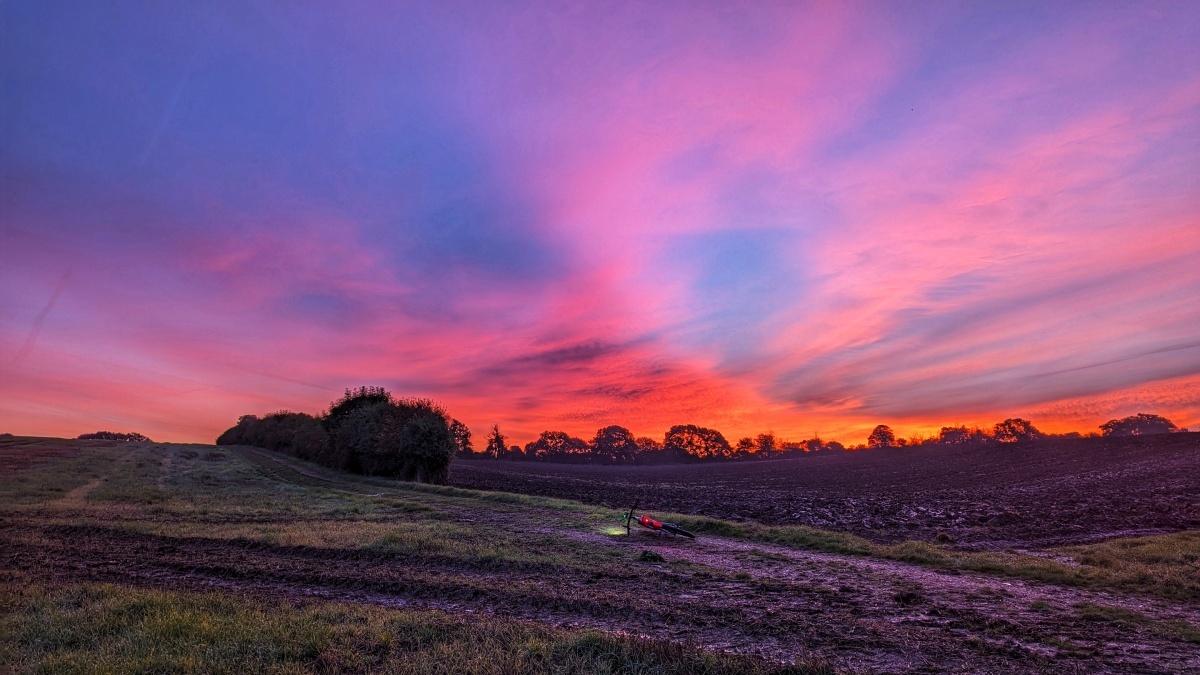OK, no stunning sunsets here, or fabulous mountain vistas, or bucolic country scenes - ten a penny in This Place

. No, we're down and dirty in Stoke on Trent.
Mates staying in some HairyBandB or whatever they're called, so I ended up kipping in the garden shed, although they deigned to let me in for breakfast in the mornings.
First day we decided to catch a train 20 miles up the line to Congleton, then ride back along some of the old railway trails, the first one being the Biddulph Valley Way to, unsurprisingly, Biddulph...

Upon arrival, perusal of my 1947 OS map showed that the source of the River Trent was fairly close by at Biddulph Moor, so off we went on quite a strenuous 300' climb just to see a trickle of water. At the top we found a rather bizarre self-service milk shake bar which helped to slake our thirst, then a friendly resident pointed the way to the source although he did say "prepare to be underwhelmed". I'm rarely underwhelmed - it's always possible to extract some pleasure from the least-promising situations if you make a bit of effort and keep an open mind - and I enjoyed pouring some of my water into the well while thinking that a few days, and 168 miles, later it would become a minor part of the North Sea. I should have exchanged it for a similar amount of Trent water in return!

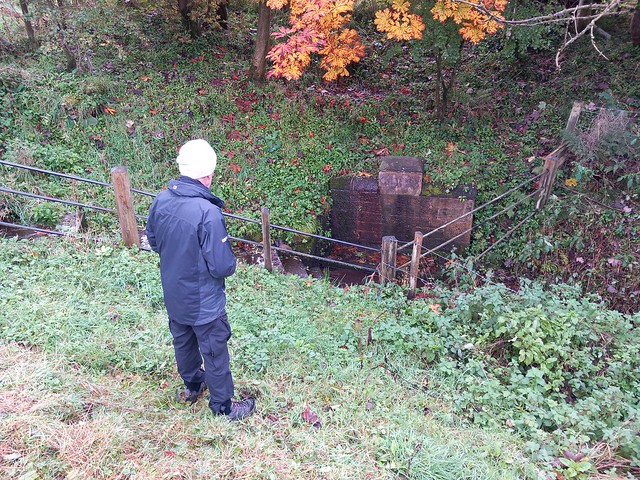
A high-speed blast back down to Biddulph for a spot of lunch and a chat with the locals in the Rose & Crown, then further along the old railway to Chatterley Whitfield colliery. The pit closed in the 1980s, with operations transferred to Wolstanton a few miles away, and it was turned into museum. Unfortunately the museum closed after Wolstanton itself closed down and flooded, but most of the colliery is still there, and is in fact the largest still-complete old coal mine complex in the country. Wolstanton itself was the deepest coal mine in Europe at a fairly mind-boggling 3300' deep.


End of the line for these coal wagons, but we continued to follow the old track down into Stoke with the rails slowly succumbing to the undergrowth 35 years after they last saw a train pass...
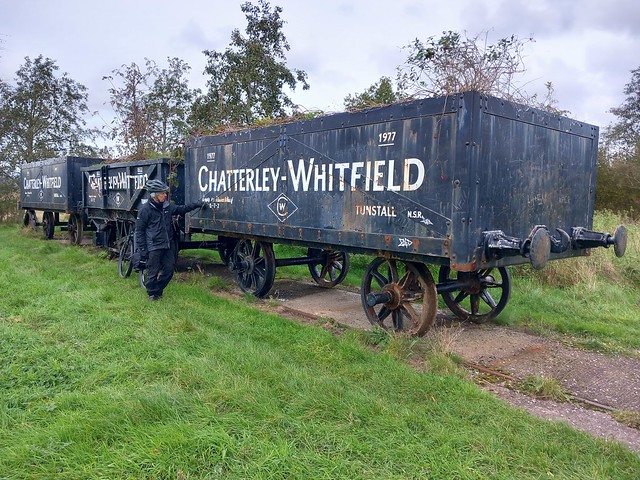

We picked up the Cauldon Canal and rode into Hanley, many of the old potteries factories are still surviving, albeit gradually crumbling and slumping into ruins. One or two of the 'bottle' kilns have been preserved, but look sadly out of place in the sea of shonky new-build housing which seems unlikely to last as long as the kilns....
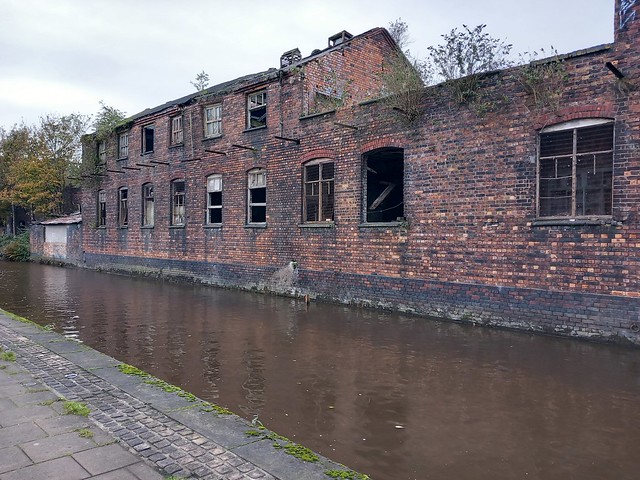

Whilst it's easy to view older times through rose-tinted specs, at least they built some extremely attractive parks and buildings for the downtrodden potteries workers to enjoy on their few days off.... then it was back to our pad through the terraced streets of Stoke itself....


The evening was spent consuming a very tasty all-you-can-eat curry on London Road, then it was back to my, er, cosy shed for the night! The next day we opted for a cycle tour of the "Five Towns" of Stoke, using as many cycle trails and canals as we could, the first part of the route being along the Trent & Mersey Canal to Etruria then up into Hanley via various nasty supermarket car parks and retail unpleasantness....

From here NCN Route 5 turns north through Burslem, passing more scrapyards, used-car lots, takeaways, and even the odd pleasant park... we were rather amused to read that No TomFoolery Is Allowed! What, us? As suggested by the sign, we were "'velocipeding' in our finest (bikepacking) clothes in the hope of being seen and admired". Not surprisingly nobody gave a monkeys and we were roundly ignored.

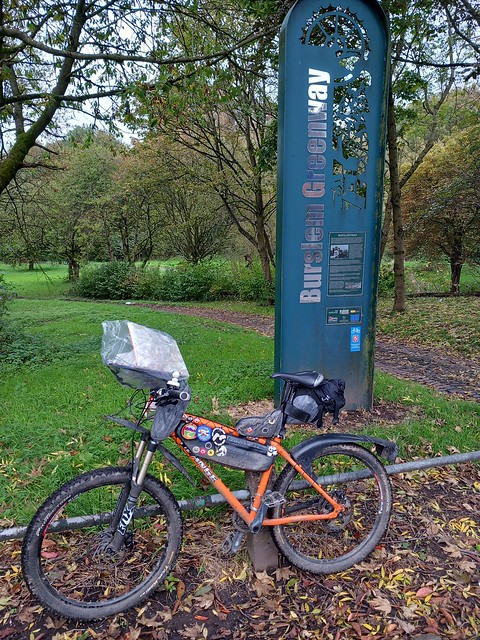

With the surroundings growing ever more salubrious we continued up through Tunstall, the signals at Stop for the foreseeable future....
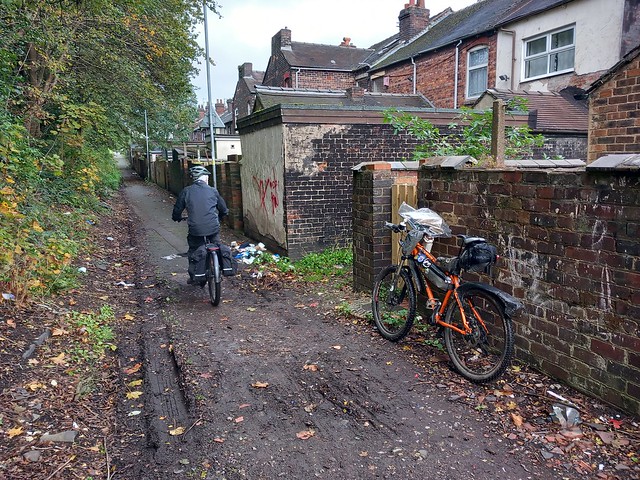

The numerous old coal mines in the area have left their mark, but less well known are the iron deposits that turn many of the streams orange, including the Trent & Mersey Canal at Harecastle Tunnel. Do you think my Trailshot would be up to the job of filtering it?


We had a nice chat with the Canals & Rivers Trust guy who told us all about the history of the tunnel, then while the canal took its almost 2 mile long path underground, with in past times the boat people "legging" their vessels through, we followed the way the horses would have been transferred to the other end - the clue's in the question...

Along through the country park, we tested the various gym torture machines....

By the time we'd reached the other end of the tunnel the C & R Trust chap had arrived there himself, and continued to tell us all about the voluntary work undertaken to maintain the tunnel and conserve the wildlife. A recent rather incredible sighting had been a
beaver, which came all the way along the Cauldon Canal, then up the Trent & Mersey through the city, and unbelievably made its way through the 2-mile tunnel to Kidsgrove. I hope it had more luck being fed there than we did - nearly all the pubs and cafes were shut.
Up until the year 2000, the massive Shelton Steel Works was still operational on both sides of the canal at Middleport, but sadly it has now all been swept away and replaced by the usual retail religion worshipping establishments.

Similarly most of the old-style potteries have now closed, leaving just Middleport to fly the flag, with its original bottle kiln still operational, amidst numerous life-expired old buildings. Even in their decrepitude these still show their Victorian pride in design and construction.
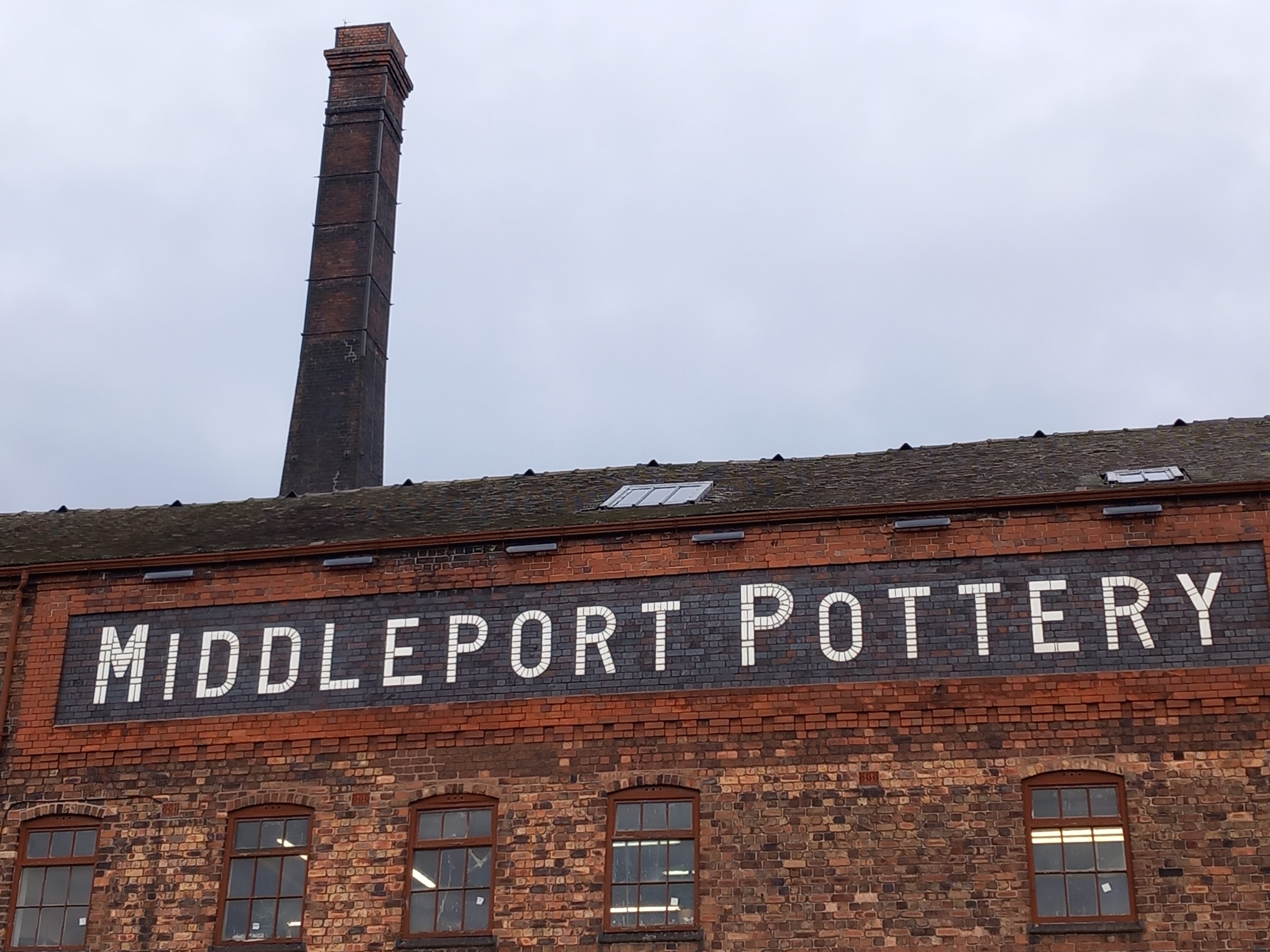


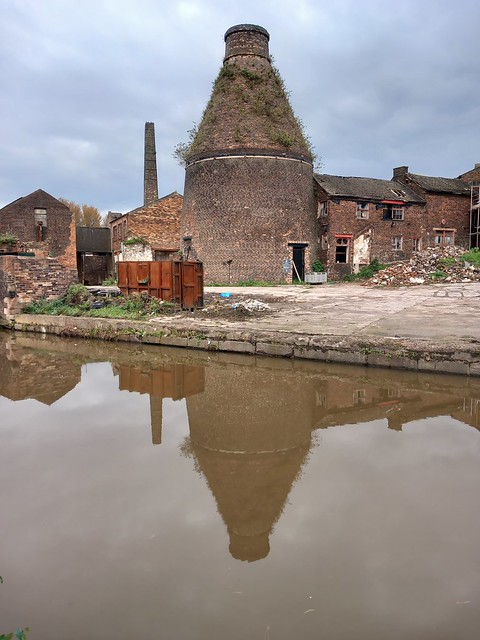
Arriving back in Stoke, the canal dips down under the railway, itself under a footbridge, thereby here showcasing three (no, four!) non-road transport modes that are still providing a valuable and in most cases unobtrusive service....
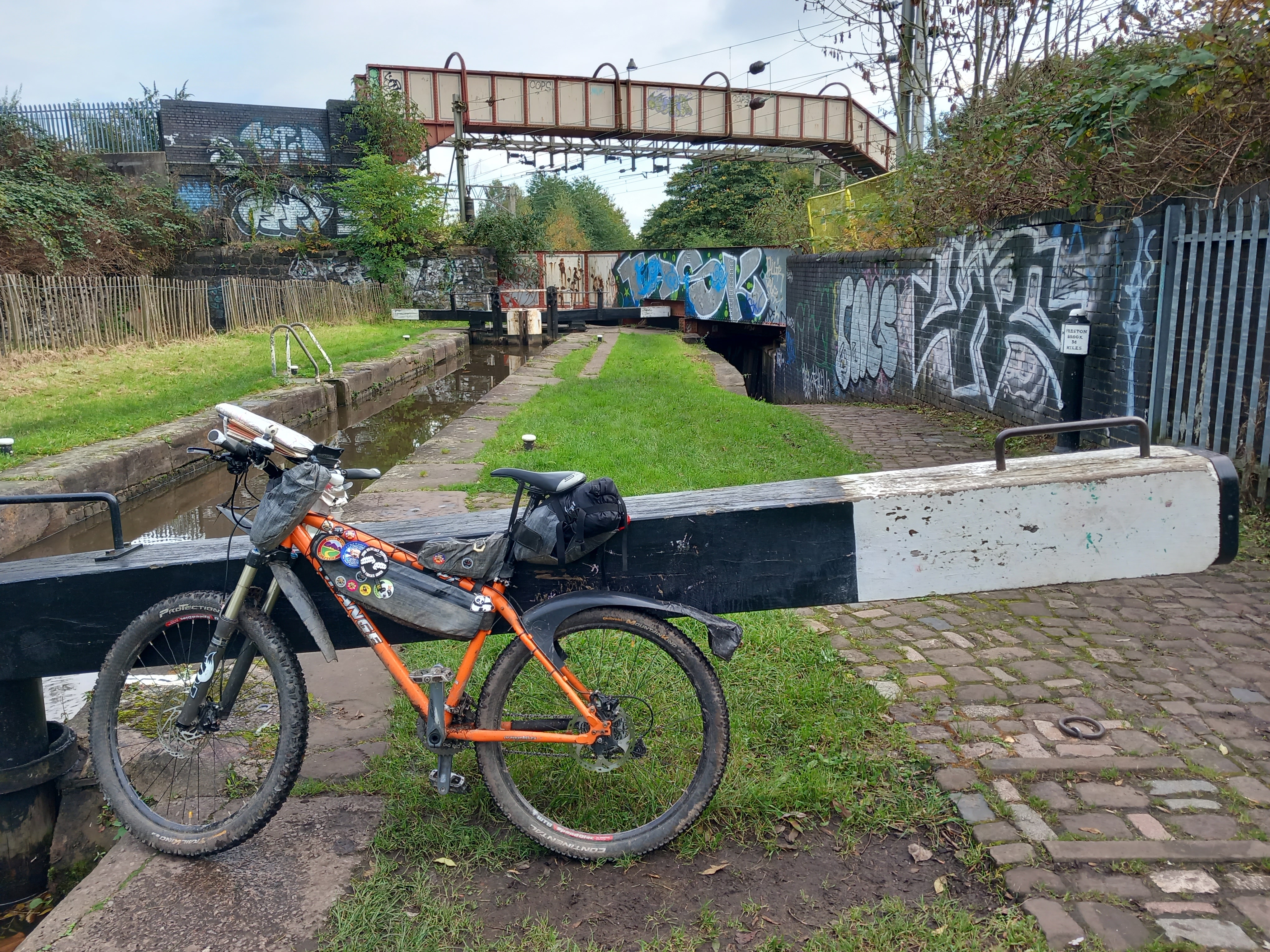
A quick final pint in a Stoke back-street boozer to discuss and mull over our rides, then it was back on the train to Milton Keynes.
So perhaps not your average bikepacking tour, but given the choice between it and yet another, albeit superb, view from a remote mountain top I know which one I find more fascinating and interesting

.
'Reg'



